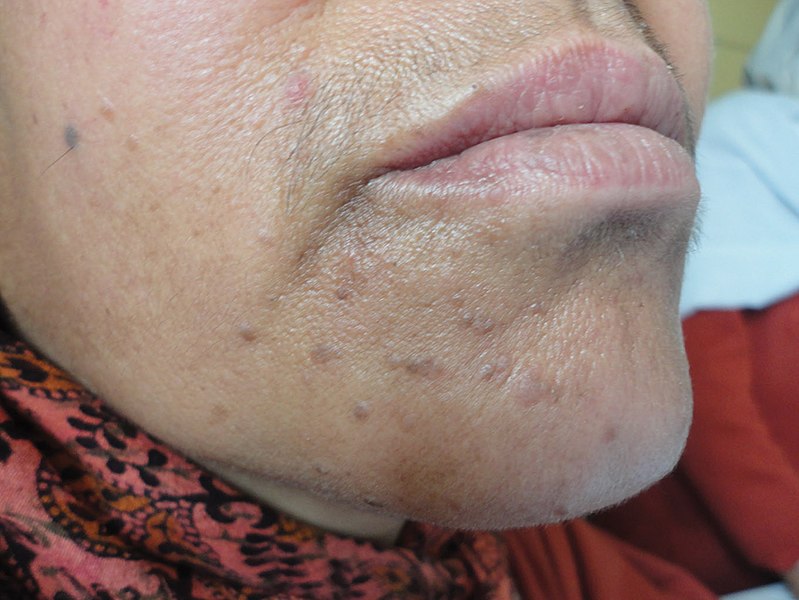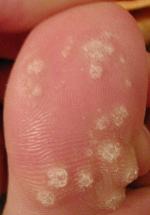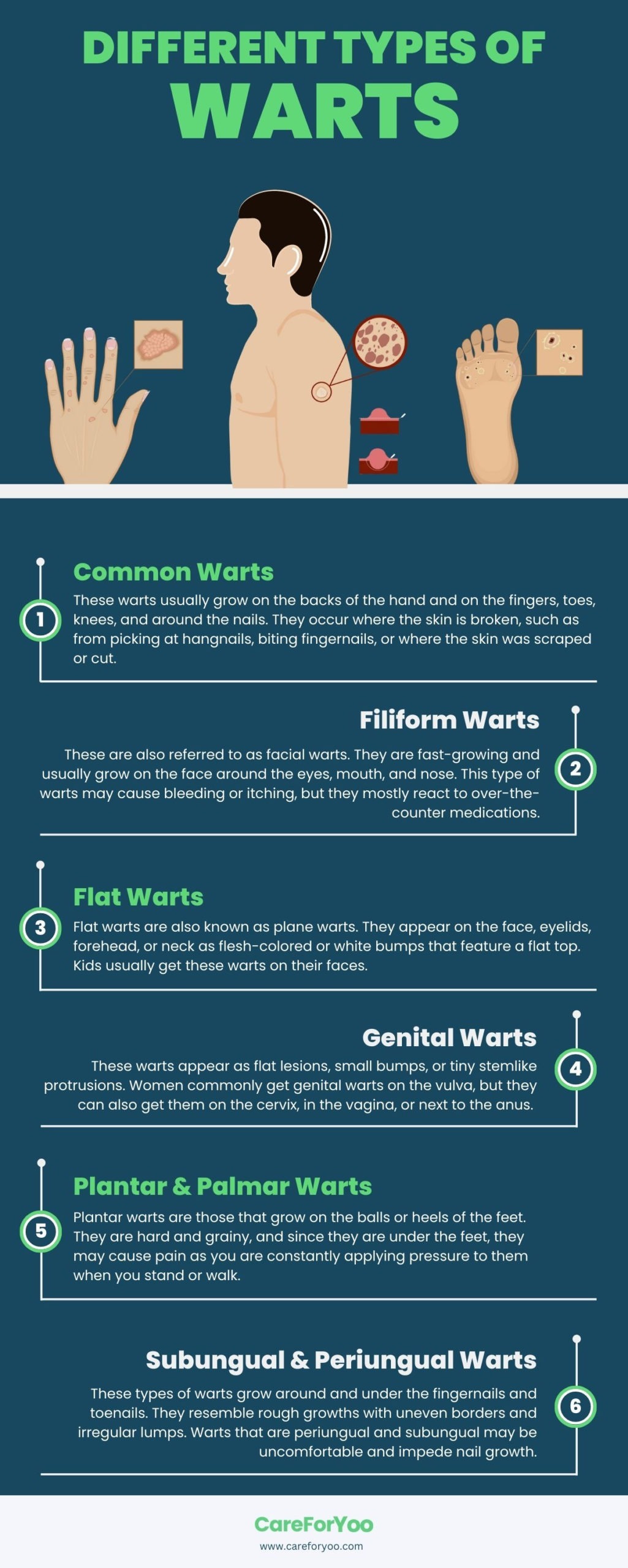Everyone of all ages can develop warts, which can be uncomfortable, make them feel self-conscious, and make them wonder where they came from. These tiny, benign growths, which frequently arise on the hands, feet, or genital region, can be upsetting for those who experience them. But why do people initially develop warts? What elements support their emergence and survival?
Understanding the fundamental causes of warts is necessary to disprove this confusing skin ailment. Despite their inconsequential appearance, warts are brought on by the human papillomavirus (HPV), a wide family of viruses that affects the epidermis of the skin. Given that there have been found over a hundred different types of HPV, each with distinct features and favored habitats, understanding the mechanisms underlying their formation is crucial.
This article goes into a guide to dealing with warts, examining the causes of their growth and the numerous methods by which they are spread. We’ll investigate the connection between compromised immune systems and wart susceptibility, illuminating why some people are more susceptible to their emergence. We’ll also look at the various kinds of warts, their distinguishing characteristics, and the symptoms they can cause, which can change depending on where they are.
We will also look into how contagious warts are, revealing the ways in which these bothersome growths can be passed from one person to another or even to various body areas. Understanding the modes of transmission can assist individuals in taking preventative actions to reduce their risk, whether it be through sharing contaminated surfaces or objects or through direct contact with an infected person.
By solving the mystery of why people acquire warts, we hope to provide readers with important knowledge that will enable them to take proactive measures in controlling and avoiding this common skin disease. So join us as we go on this intriguing journey to uncover the truth about warts, explain their causes, and offer practical guidance to help individuals properly treat these uncomfortable growths.
Who Might Get Warts?
Children are more prone to developing warts due to their frequent cuts. However, warts can affect anyone. The virus that causes warts is more likely to affect elderly persons, people with autoimmune illnesses, and people whose immune systems have been compromised.
Causes of Warts
The human papillomavirus (HPV) causes a skin infection that develops warts when it enters a cut in the skin. Warts spread quickly. The virus can pass from one person to another or from one area of the body to another through:
- Contact with a wart directly
- Touching a contaminated surface, such as a doorknob, towel, or shower floor.
- Sex activity (genital warts)
- Cuticle plucking and nail biting
- Shaving
Types of Warts
The following are a few of the wart kinds brought on by HPV:
- Common warts (verruca vulgaris) – These appear to be rough-surfaced, elevated, hard lumps. However, the hands and knees are the most frequently affected bodily parts.
- Flat warts (verruca plana) – These appear to be rounded, flattened lumps. Any portion of the body can be impacted, however the hands, lower legs, and face are the most frequently affected areas.
- Filiform warts – These appear to be long, thin threads. Usually, the face is affected, especially close to the lips and eyelids.
- Mosaic warts – These resemble a collection of closely spaced warts. The most frequently impacted areas are the palms and soles of the feet.
- Plantar warts – These look like tiny, hard bumps and may have very small black dots on them. Most frequently, the foot soles are affected.
- Genital warts – These resemble lumpy, granular ‘cauliflower’-like grey or off-white colors. The penis, vulva, and anus are the areas most frequently affected by genital warts because they are sexually contagious. Women are more likely to get cervical cancer if they have certain common genital warts kinds.
Symptoms of Warts
Depending on the kind of wart and where it is on the body, different warts may present with different symptoms. Here are some typical signs and symptoms of warts:
- A growth that is raised, bumpy, or rough on the skin.
- Look that is pink, tawny, or flesh-colored.
- Texture that is small, gritty, or cauliflower-like.
- Especially when pressure is applied, discomfort or tenderness.
- In the affected area, there may be itching or irritation.
- Wart clumps in a specific location.
- The wart contains microscopic black flecks or blood vessels, sometimes known as “seed warts.”
- Plantar warts, which are on the bottom of the foot, can be uncomfortable when walking.
- Common warts, which can develop on the knuckles, nails, or fingertips, can have a scratchy texture.
- Genital warts, which can be flat or elevated, can itch, hurt, or even bleed when a person engages in sexual activity.
It’s essential to remember that not all warts create symptoms or discomfort. But if you think you might have a wart or if you have any unsettling symptoms, you should see a doctor for a precise diagnosis and the best course of action.
How are warts managed and treated?
Following the virus’s defeat by your immune system, warts frequently disappear on their own. Your doctor could suggest treatment since warts can spread, hurt, and look bad. Options consist of:
- At-home wart removal – Salicylic acid is a component of over-the-counter (OTC) wart removal drugs. Warts are removed by this chemical one layer at a time. These products are available as liquids, gels, and patches. To remove the wart, you might need to use the treatment every day for several months.
- Freezing – Your doctor will use a process known as cryotherapy to freeze the wart. A blister develops after freezing. The wart and blister eventually fall off. You might require several therapies.
- Immunotherapy – Immunotherapy aids in the immune system’s fight against the virus to cure rigid warts that don’t respond to previous treatments. In this procedure, a topical substance called diphencyprone (DCP) is utilized. The wart disappears as a result of a slight allergic reaction brought on by DCP.
- Laser treatment – The wart’s inside blood arteries are heated and destroyed by your doctor using laser light. The technique kills the wart by cutting off the blood supply.
- Topical medicine – Cantharidin containing liquid mixtures may be applied by your doctor. Under the wart, a blister develops, cutting off the blood supply. In approximately a week, you must go back to your doctor’s office to have the dead wart removed.
Complications of Warts
The majority of warts disappear without any major issues. Warts can occasionally cause problems, such as:
- Cancer – Anal cancer, cervical cancer, and throat (oropharyngeal) cancer are only a few of the cancers that HPV and genital warts have been related to. By receiving the HPV vaccine and using condoms, you can reduce your risk of developing genital warts.
- Disfigurement – On the hands, face, and body, unattractive clusters of warts can appear in people with compromised immune systems.
- Infection – If you pick or cut a wart, infections could result. Bacteria can infiltrate the skin through cracks.
- Pain – Most warts are painless. However, plantar warts can develop inside the foot and hurt to walk on. There can seem to be a pebble under your skin.
How to Prevent Warts?
Warts can’t actually be prevented. However, by doing the following actions, you can lessen your chance of contracting the virus or prevent the spread of warts:
- Shave away from a wart.
- Stop plucking at your cuticles or biting your nails.
- Never exchange towels, washcloths, clothes, razors, nail clippers, or other private goods.
- Never touch a wart on another person.
- Use condoms and the HPV vaccine to avoid genital warts.
- In order to stop plantar warts from spreading, keep your feet dry.
- Avoid picking, cutting, or scratching a wart.
- When using a public shower, pool, or locker room, wear flip-flops or shoes.
Conclusion
Warts are transmitted through both direct and indirect contact and are brought on by the human papillomavirus (HPV). The likelihood of having warts is increased by factors like compromised immune systems and specific activities. Effective wart prevention and management can be achieved by maintaining proper hygiene and finding the appropriate treatment.




